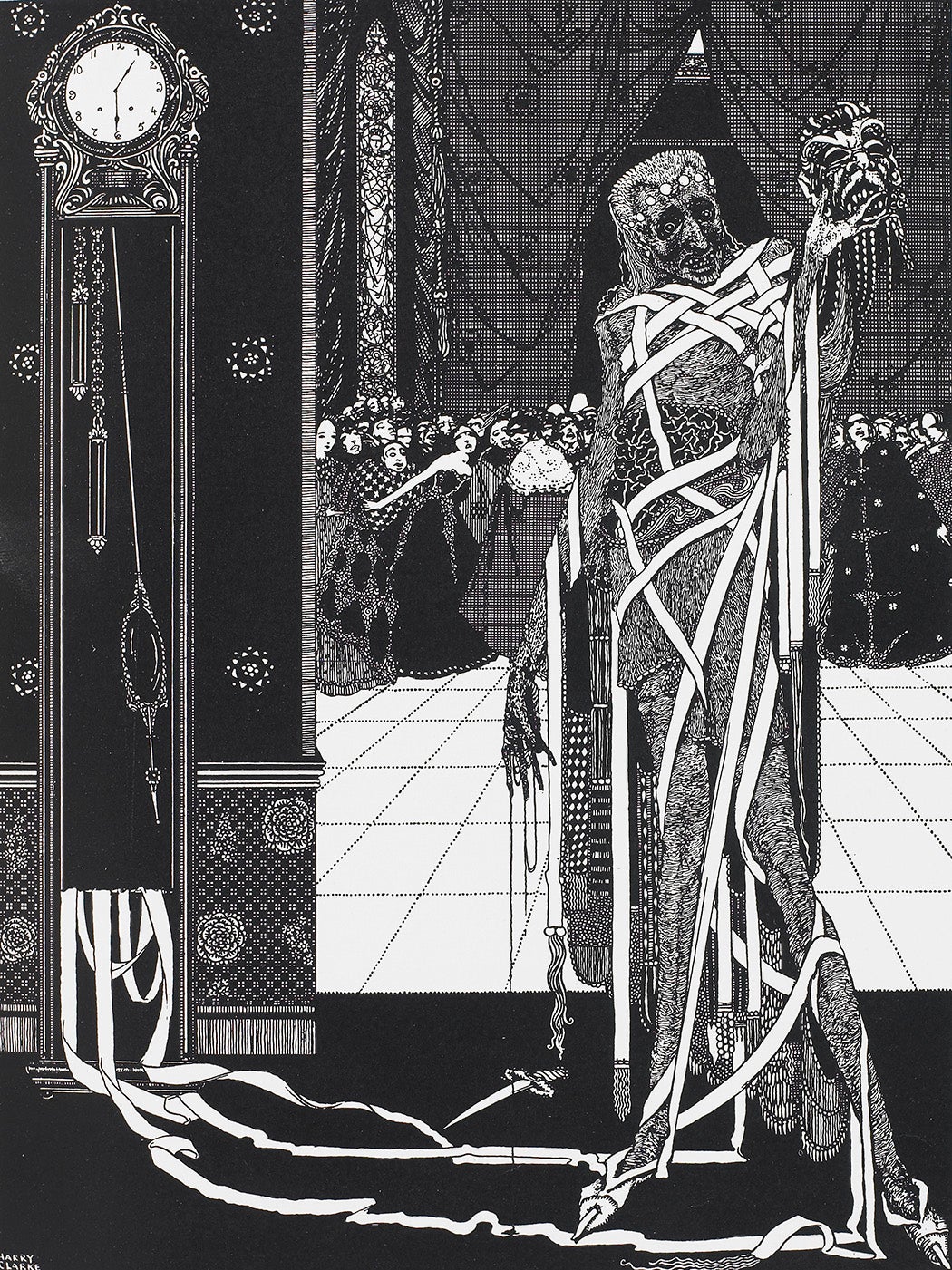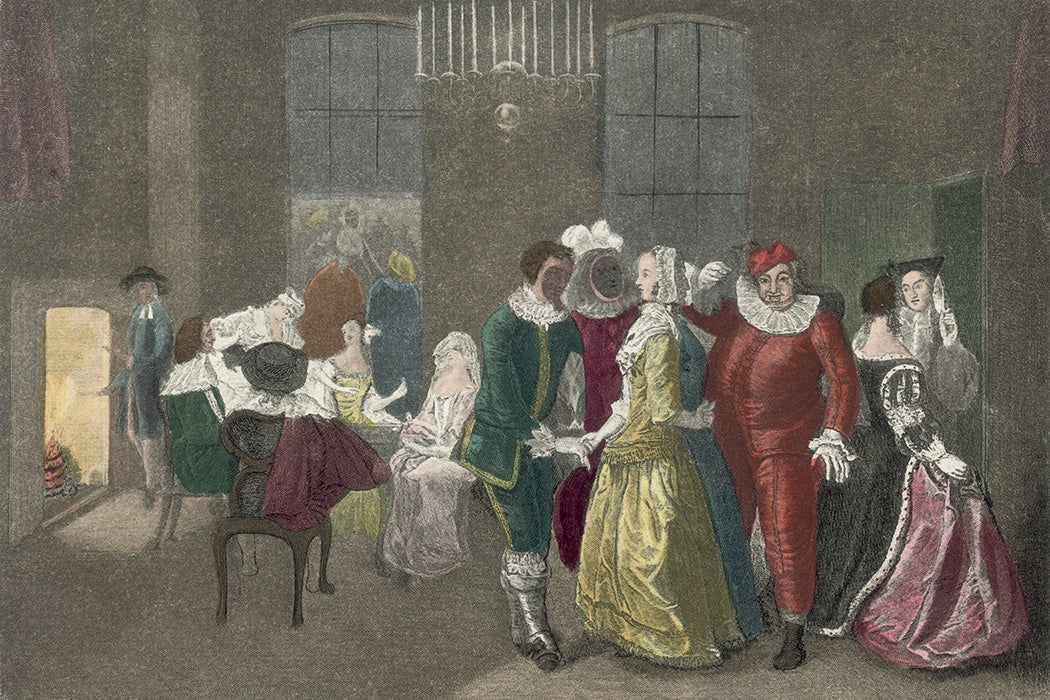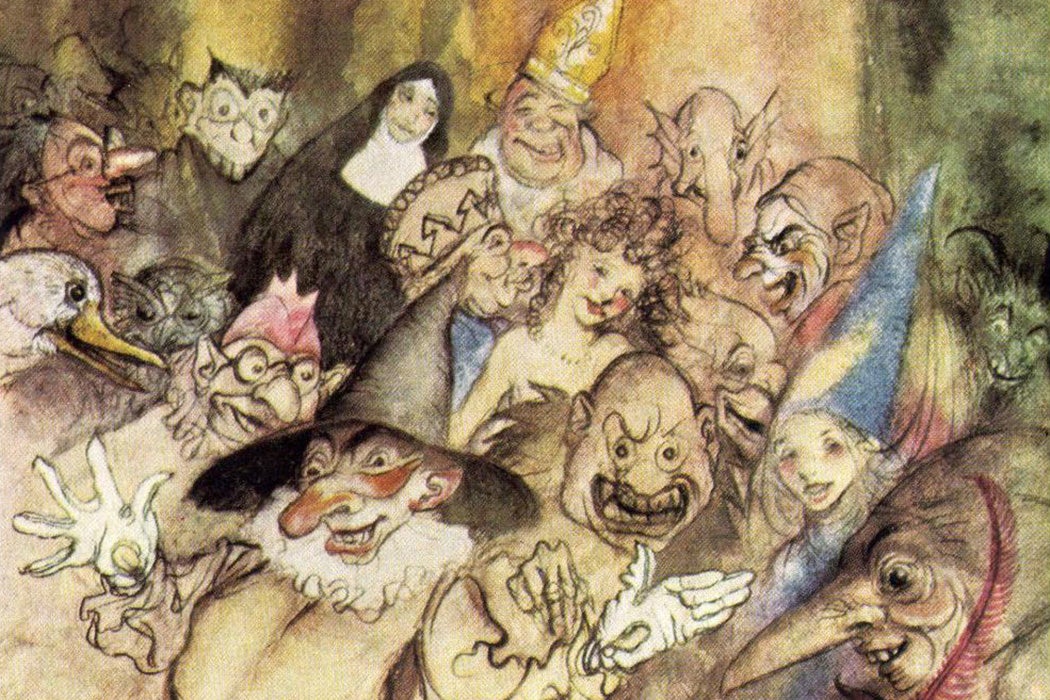The coronavirus pandemic has changed the way we party. Public health regulations curb the number of guests we can welcome into our homes. The Zoom party has replaced the house party. Dancing is off limits in most places, and large social gatherings draw ire as potential superspreader events. Meanwhile, late in 2020, the immunologist Paul Lehner proposed “coronavirus parties”—similar to pox parties in the 1970s and 80s—for young people to be infected with COVID-19 so as to gain immunity from the virus.
The idea that partying can make you sick is not new. But the party as an occasion for illness or disease—as an occasion not generally in the service of public health—has specific valences in history and culture. We usually think of the festive in its positive sense, as a means of celebrating and strengthening the social world in what the cultural anthropologist Victor Turner called communitas. But a party can just as easily turn us against each other (“party” can also mean a division, a part, or one side of a dispute). As the scholar Summer Sutton writes, the pandemic “has introduced many new, semi-fantastical characters and character types to the collective imagination,” including “the selfish partygoer” who ignores advice to socially distance, thus risking themselves and others.
Literature is one way of understanding the healthy and unhealthy desires, values, and anxieties generated by social events. Writers use parties and party behavior to propel the plot, create conflict, illustrate character, and pose questions about human society. Throughout literary history—from the Satyricon to The Great Gatsby—poems, plays, and prose show how parties can be incubators of social and ethical, as well as biological, pathogens.
Victor Turner’s theories of festivity and celebration see parties as related to ritual practice. For Mikhail Bakhtin, an influential theorist writing about the religious feasts and public fairs of the Renaissance, the transgressions and excesses of festivity have positive effects, generating cathartic social renewal. But the way we party is historically and culturally specific. By the eighteenth century, the public events upon which Bakhtin based his theories had been replaced by more exclusive and private celebratory events, such as masquerades and balls. At the turn of the twentieth century, the word “party” had a widening scope, representing an extensive range of gatherings that could be public or private, formal or informal. As June and Doris Langley Moore commented in their 1930s etiquette guide, The Pleasure of Your Company: A Text-Book of Hospitality: “Nowadays almost every kind of friendly gathering is described as a party.”
Our social lives mutate across time and space. David Seed, a scholar who has written about parties in F. Scott Fitzgerald’s work, writes that Bakhtinian readings of festivity leave little room for more modern understandings of the party. Seed suggests that parties aren’t always celebratory. Instead, they’re often sickening.
Weekly Newsletter
For example, in Edgar Allan Poe’s Gothic short story “The Masque of the Red Death” (1842), a sudden contagion at a masquerade taps into nineteenth-century anxieties about the spread of deadly illnesses. In Poe’s tale, one thousand nobles hole up in an abbey to protect themselves from the Red Death. The Red Death is fatal, causing “sharp pains, and sudden dizziness, and then profuse bleeding at the pores.” The aristocrats’ merry refuge is compromised when their host, Prince Prospero, holds a masked ball within the abbey’s walls. As the festivities continue, a mysterious guest dressed in “the habiliments of the grave” crashes the party, passing without notice through the rooms—and infecting the guests.
The Poe scholar David Faflik argues that the dark end of Poe’s story “spells our earthly end as well.” Poe’s language, he suggests, is captivating, and the reader is initially seduced by the sumptuous setting. The story is filled with details of the party’s “unusual magnificence:” the “appliances of pleasure” provided by the Prince (food, drink, performers, music) and the “glare and glitter and piquancy and phantasm” of their costumes. As a public health tool with a long history, the mask protects, but for partygoers, it conceals or disguises (there’s been some scientific discussion of how masks change our perception of faces, and the mask is a common trope of deception).
For Poe’s revelers, the Red Death that walks among them “like a thief in the night” possesses no “tangible form:” behind the mask, there is nothing but the infection that kills them. The story’s final paragraph captures the terror of the scene:
…one by one dropped the revellers in the blood-bedewed halls of their revel, and died each in the despairing posture of his fall. And the life of the ebony clock went out with that of the last of the gay. And the flames of the tripods expired. And Darkness and Decay and the Red Death held illimitable dominion over all.
“The Masque” is commonly interpreted as a commentary on the inevitability of death. But Poe’s use of the masquerade—which, for eighteenth and nineteenth-century authors, signified irrationality, foolishness, and corruption, according to the literary critic Terry Castle’s book Masquerade and Civilization—also specifically calls attention to the nobles’ arrogant pursuit of pleasure and excess in a time of crisis. Poe’s story connects contagion with irresponsible pleasure.

The parties in Evelyn Waugh’s satiric novel Vile Bodies (1930) are definitely irresponsible, but hardly pleasurable at all: as we’ve written elsewhere, they waste time, effort, money, and occasionally life. As Marius Hentea writes, Vile Bodies was one of a host of party novels published during the twenties and thirties, and follows a group of young socialites based on the historical Bright Young People of post-war London. In a letter to fellow author Henry Green, Waugh wrote that Vile Bodies “seems to shrivel up & rot internally,” hinting that the novel’s parties aren’t all frolics and fizz.
Instead, they are physically nauseating and morally depleting. In the opening chapter, a voyage across the English Channel is likened to “one’s first parties, […] being sick with other people singing.” In a later scene, a gossip columnist gate-crashes a party in a bid for the latest scoop, masking his identity with a fake beard. The mask is a symptom of the “bogus” modernity which, as the literary scholar Brooke Allen comments, Waugh skewers throughout the novel. Gaining entry is a matter of life or death: “if I miss this party,” one character, Lord Balcairn, says “I may as well put my head into a gas-oven.” When he’s thrown out for being recognized, he follows through with his plan. Instead of offering a venue for play and renewal, the party drives him to suicide.
Only slightly less grim is the novel’s most infamous party scene, in which a party is held in a tethered airship (an inherently unstable setting, with echoes of warfare that would not have been lost on Waugh’s audience). While the party’s odd venue is a novelty, the guests in attendance are “all the same faces.” As the protagonist, Adam, enters the airship, one of the first things he sees is a woman “breathing heavily; evidently she felt unwell.” This scene contains the novel’s best-known passage, an exhausted lament on party-going:
Wild West parties, Russian parties, Circus parties, parties where one had to dress as somebody else […] parties in flats and studios and houses and ships and hotels and night clubs […] dull dances in London and comic dances in Scotland and disgusting dances in Paris—all that succession and repetition of massed humanity… Those vile bodies…
The “succession and repetition” shows that what should be special occasions are instead routine, banal and “sick-making” (Waugh’s phrase). As Naomi Milthorpe argues, the passage “offers a catalogue of party types that, as the examples multiply, become increasingly repulsive” before eventually “devolving into alliterative, elliptical nausea.” Such a progression characterizes the rest of the scene, as the guests hop from one party venue to the next. Moving from an airship to an illegal nightclub, then to an acquaintance’s bedsit, Adam concludes his evening by listening to his host vomit next door.

More recently, Ling Ma’s Severance (2018) has been a popular inclusion on quarantine reading lists and think-pieces for its parallels to our present moment. The novel is set during the outbreak and aftermath of a global pandemic, Shen Fever, that leaves sufferers unconsciously repeating their daily routines until total physical collapse. There are aspects of the novel’s dystopian vision that parallel the coronavirus pandemic (Shen Fever originates from China, businesses issue work-from-home orders, mask-wearing becomes commonplace). But as the literary scholar Jane Hu writes, Severance is noteworthy for the way it imagines late capitalism, and the rituals and structures that support it, as itself a disease. This concern plays out in a party scene halfway through the novel.
Early in the pandemic, the narrator Candace Chen, who works at a Manhattan publishing house, attends an impromptu party at her colleague Lane’s apartment loft after an evening on the town. At a bar, Candace uses the symptoms of Shen Fever as the basis for striking up conversations with strangers, explicitly linking the social with the sick:
Am I sick? Do I have a fever? I wanted them to be complicit in agreeing that I was indeed sick, that I should have stayed home that day. […] But they had all laughed. You’re fine, one guy assured me. A million palms had touched my forehead, now the dirtiest, most bacterial part of me.
Later, at the party itself, guests joke about “epidemic fashion” and “party favors” are procured. Still, Candace’s wine tastes “bloody” and, dressed in an “office outfit,” she feels “wilted in comparison to their glossy day-to-night sheath dresses.” Hearing an elderly, isolated neighbor’s ceaseless jangling of her keys at the door, Candace goes to help and discovers the neighbor is fevered.
The English professor Stephanie LeMenager argues that Severance’s title labels the Shen Fever “as a break with the present,” but Ma also “sees the present as itself a disease of the past, an emanation of nostalgia and habit.” Severance’s party scene acutely captures this anxiety, diagnosing contemporary sociality as diseased. While Lane hosts young professionals from across the city for a party, she fails to look out for the welfare of those living right by her. As Lane tells the paramedic who questions her why no one realized the elderly woman was fevered, “We were only neighbors.” The closeness of “neighbor” is instantly qualified, and negated, by the coldness of “only.”
Parties under late capitalism, Ma shows, might replicate familiar routines and structures of sociability, but are mere echoes of the real thing. Lane’s party is essentially a networking affair, a reminder of the anxious blurring of labor and leisure in the neoliberal economy. The communitas or catharsis identified by Turner and Bakhtin is another of the losses sustained in Ma’s apocalypse, another aspect of the pre-pandemic world from which her novel’s protagonist is cut off.
The idea of the party as disease shapes Poe, Waugh, and Ma’s narratives. These three texts point to anxieties about biological pathogens and show how social life itself is potentially pathological. Literature can be a document, a mirror, or a fantasy of human values and activities, recording or projecting the mental, emotional, and physical experiences we undergo in our social and private lives. It is no surprise that, in times of crisis, we turn to fictional texts to make meaning out of what’s happening around us. The literary scholar Jesse S. Cohn, for instance, has pointed to the proliferation of references to popular fiction and film (such as the 2011 film Contagion) in commentary following the World Health Organization’s declaration of a pandemic in March 2020. As one character remarks in Severance: “When you wake up in a fictitious world, your only frame of reference is fiction.”







